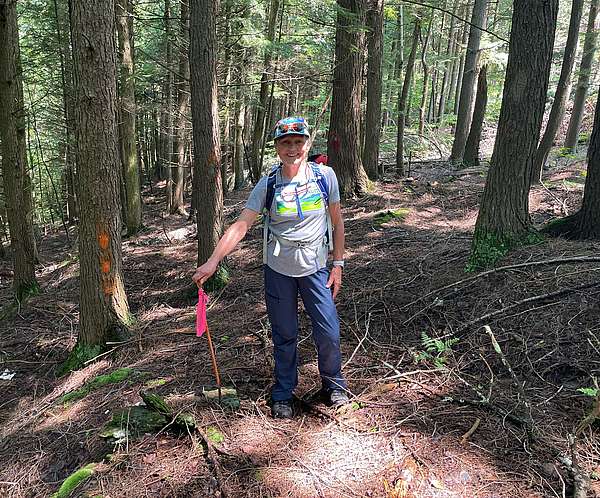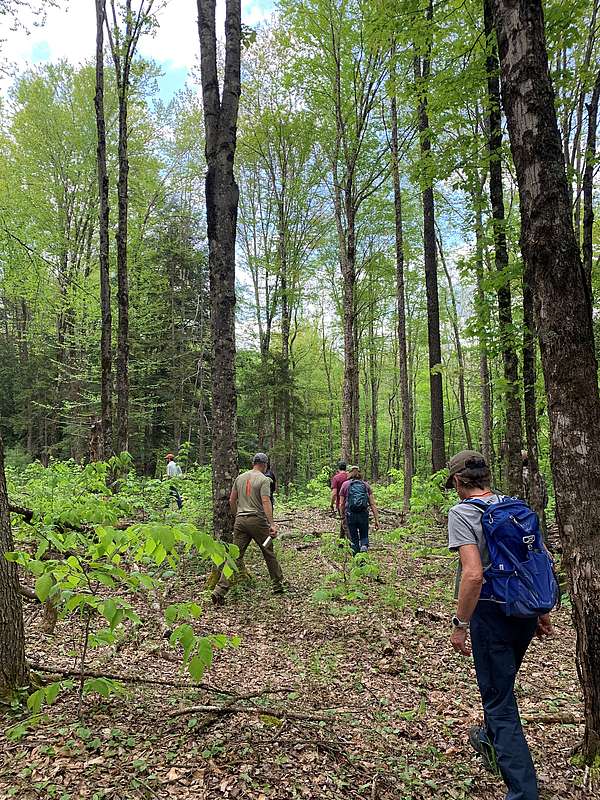SLT Land Steward Suzanne Danzig shares her experience at the Vermont Coverts Woodlands for Wildlife Training in the Shutesville Hill Wildlife Corridor. Published by the Stowe Reporter, August 15, 2024. Original link here.
Who does not enjoy discovering a treasure that provides a wealth of knowledge, especially knowledge as it relates to Vermont’s most cherished features, its woodlands and wildlife?
Well, that is just what Vermont Coverts — pronounced with a short o — provided to a group of like-minded nature lovers at a three-day workshop chock full data provided by Vermont’s finest.
Although Vermont Coverts was established in 1985 by a University of Vermont Extension forester, I discovered it for the first time this spring, thanks to the Stowe Land Trust. I happened to notice an opportunity to apply for a training program sponsored by the organization. This workshop is offered to private landowners, stewards or forest professionals and other interested members of the public who are looking to enhance their knowledge regarding managing and improving their properties and woodlands to enhance wildlife habitat, as well as to promote a healthy ecosystem.
As a landowner and a volunteer steward for one of Stowe Land Trust’s conserved properties, I felt I would benefit from such a workshop and so I submitted my application.
Did you know that more than 78 percent of Vermont’s forestland is privately owned? In addition to this statistic, I learned that Vermont is an important national breeding region for special wildlife species. These are some impressive facts, but what goes along with such statistics is a huge responsibility for these landowners.
Upon learning about Vermont Coverts and ultimately qualifying for the program, I was eager to dive in. The group was established to make sure landowners are fully educated about the care of their important woodlands, and in turn, share their knowledge with other organizations, public agencies and neighbors. Wow, what a responsibility.
The Coverts Cooperative Workshop that I participated in took place May 17-19, 2024. It was three days of presentations and field work alongside 21 other like-minded participants organized by Lisa Sausville, the group’s executive director.
Professionals from the Audubon Society, biologists and foresters from Vermont Department of Fish and Wildlife, Vermont Department of Forest Parks and Recreation and the Natural Resource Conservation Service shared a wealth of knowledge in their respective specialties.
Topics covered included managing habitat for wildlife, introduction to forest management, forest for birds, identifying invasives and their management, climate change in northern forests and the importance of Vermont woodlands for migratory birds.
In addition to our classroom education, we took a few field trips where we were able to observe, in person, some of the information that these amazing professionals shared with us. These were long, full days but my classmates and I were so enthusiastic about our newly acquired knowledge and the benefits of it all that time flew.
Now, my time spent hiking in our beautiful forests and maintaining my own property has taken on a whole new perspective after going through this program. Going forward, I am eager to continue furthering my education through Vermont Coverts’ one day programs, open to all, sharing what I have learned and putting it to use as I continue to look after Crawford Forest as its steward for the land trust, along with maintaining a connection with my fellow cooperators.

